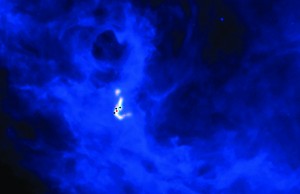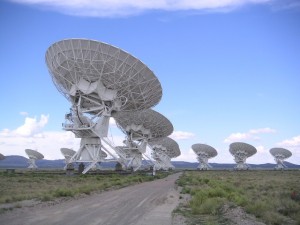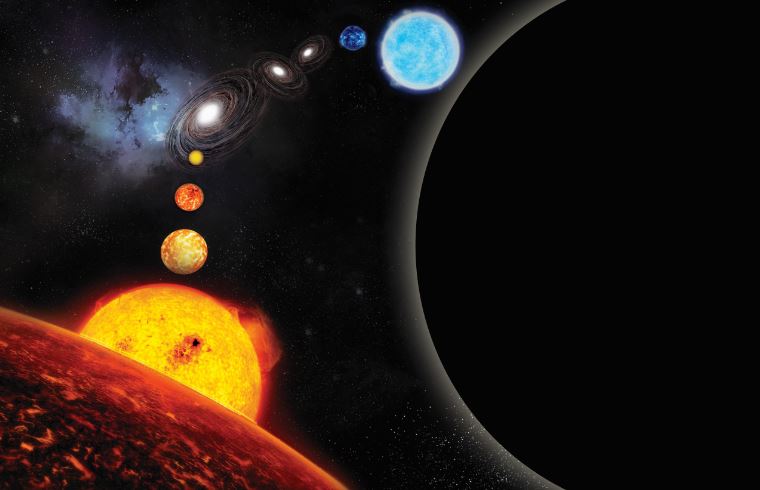Twinkle twinkle little star/ How I wonder what you are?
This age-old question from a children’s song may finally be answerable. Researchers recently discovered the youngest star system ever observed, which affords an opportunity to understand star formation from page one — the beginning. Although stars need millions of years to mature, which makes it impossible for us to observe them through their entire development, we can still try to understand star development by investigating young stars at different stages of formation. The observed quadruple star system, a group of gravitationally bound siblings, will not be fully mature for another few million years. But for now, it gives us much needed insight into the process of star formation, from their earliest stages as clouds of gas to their final days before star death.
The study — a collaborative effort between researchers from Yale and other institutions in the United States, Germany, and the UK — brings astronomers closer to a complete picture of how stars form, change, and die. Hector Arce, associate professor of astronomy at Yale, and Stella Offner, who was a Hubble postdoctoral fellow at Yale and who is now an assistant professor at the University of Massachusetts, were coauthors on the paper published in the Nature. Their findings provide insight into multiple star systems, a research area that until now has been confined to mathematically based simulations. The study not only gives us an opportunity to observe stars forming, but it could eventually help us understand a range of phenomena from the frequency of supernovas to the formation of exoplanets.
How stars form: the basics
Star formation begins with large, dense clouds of molecular gases suspended in interstellar space. These clouds are called stellar nurseries, and are mostly composed of hydrogen and helium gas. They are stable as long as the gas pressure within the cloud balances its gravitational force. However, as the cloud expands, condensations in the cloud collapse and form large masses known as protostars.
Star formation can be disrupted by thermal energy or turbulence in the gas cloud. The process can only proceed when the gravitational energy overcomes these other forces. The gravitational collapse causes fragmentation of the cloud into multiple parts — in this most recently discovered case, four parts. As the densities of the cloud fragments increase, they heat up and become increasingly opaque. At the center of the protostar is the newly formed circumstellar disc, a donut-shaped accumulation of gas and dust. The new star will continue gaining mass until all surrounding material is either incorporated into the protostar or dispersed by an outflow from the protostar. When this gaining of material comes to an end, the star is initiated into adulthood.
Baby stars
Why do Arce and Offner believe that their recent discovery is the youngest star system ever observed? There seems to be only one protostar in the quadruple configuration. The other three objects are only at the stage of gas condensation, which precedes the formation of a protostar. It is rare that astronomers are able to find stars at so young of an age, which is part of why the research team was especially excited about this discovery. All four of these stellar bodies are no more than 100,000 years old, which would be approximately equivalent to the first year of a human’s life. Since this protostellar phase of star formation lasts only a few hundred thousand years, it has been challenging for astronomers to catch stars in this state.

In order to confirm that these condensations were indeed on their way to becoming stars, the researchers analyzed the density distribution within the gas clouds. They used the dendrogram technique, which analyzes the topology of a cloud and identifies areas of self-gravitation. The areas where self-gravitation is strongest are the ones that will most likely form stars, and the numbers were high enough to suggest that stars were in fact in the making.
Multiple star systems
It may seem like most of the stars we see at night exist as solitary beacons of light, but in fact, a large fraction of them actually belong to multiple systems. These multiple systems form through the fragmentation of a dense core, which leads to a group of sibling stars. This point was evident in the star system observed in this study. The team was thus able to confirm that multiple systems form at the birth of stars rather than at a later stage of the evolution of the protostar, as some previously thought.
This does not mean, however, that once a multiple star system forms its development is complete. “Multiple systems may not be the same as when they formed,” Acre said, emphasizing that stars are never invulnerable to change. As stars age, they may break away from their siblings through changes in the stability of gravitational bonds. Acre’s team suggests that of the four sibling stars observed, the two that are closest together will eventually form a binary pair. For now, even though the quadruplet is gravitationally bound, the configuration shows signs of instability. The scientists predict that a break-up will occur in approximately half a million years. This is approximately the timescale for the protostellar phase. So, it seems that once the baby stars on the outskirts of the quadruple system reach adulthood, they may dissociate from the group of four.
More than 80 percent of stars exist in binary pairs. The fact that there exists a detailed classification of binary star systems is a testament to the prominence of binary pairs in the landscape of space. Binary stars orbit around a common center of mass and can vary in their distance from one another and in their configuration. The brighter star is usually known as the primary star, while the dimmer one is called the secondary star. Binary stars are important because their relationship can have significant effects on surrounding planets. They may even create conditions stable enough to support extraterrestrial life.
How do we know that these stars belong to a system to begin with? The physical separation of stars is not enough to indicate definitively whether or not they are part of a multiple system. The team turned to other methods, such as centroid velocity. The protostar and gas condensations in this system all display the same centroid velocity — the average velocity of all points within an object. It is also important to know the masses of the forming stars in order to determine if they are bounded or not. The masses of the forming stars were estimated to be above the brown dwarf limit, which means they should form stars rather than substellar brown dwarf planets. However, due to the wide range of masses that are possible for the stars in the system, there is a possibility that this configuration may not remain bounded. The scientists acknowledge the possibility that any star could eventually disperse to become a single star later on in development.
New technology, new perspectives
This discovery would not have been possible without the powerful telescopes used, which are capable of superior resolution and sensitivity. “Before the improvement of radio telescopes, it was very difficult to probe star formation,” Arce said. The improved resolution involves more accurate detection of both the mass and the velocity of the gaseous condensations. Previously, these measurements were not sensitive enough to detect baby stars at such an early stage of formation. In the present study, the researchers were able to go even further and measure the distances between condensations with reasonable accuracy. These three pieces of information — velocity, mass, and position — were sufficient for the researchers to decide that the stars at hand do belong to a multiple star system.

But new technology was not the only thing that made this discovery a reality. The research also integrated a breadth of perspectives and areas of expertise. Offner specializes in computational models and the physical foundations of astronomy, while Arce is most interested in the effects of star formation on surrounding environment and the chemistry of molecular clouds. With these different perspectives, the research team grasped a more holistic understanding of the quadruple system observed. Like most scientific disciplines, astronomy benefits from collaboration between experts and a more open-minded, well-rounded approach to research.
While this recent discovery sheds light on the process of star formation, our understanding of all the complicated steps involved is far from complete. To build on this new understanding, we need to observe more star systems. Through an ever accumulating collection of data on multiple star systems, astronomers will achieve this enhanced insight on interstellar phenomena. Among these phenomena is the formation of planets like our own. For example, the number and masses of exoplanets — planets outside of our solar system — surrounding a host star depends on their distance from companion stars within a multiple star system. This distance is determined throughout the stages of star formation, beginning with baby systems. The analysis of new baby star multiple systems, such as the one Acre and Offner examined, thus has tremendous potential to illuminate mysteries of our stars, planets, and the universe.
About the Author: Theresa Oei is a senior in Pierson College majoring in molecular biophysics and biochemistry. She works in Joan Steitz’s lab to discover the genomic targets of the viral microRNAs of the Herpesvirus saimiri.
Further Reading:
Arce, Hector et al. “ALMA Observations of the HH 46/47 Molecular Outflow.” Astrophysics Journal 774 (2013): 39 doi:10.1088/0004-637X/774/1/39.
Pineda, Jaime et al. “The Formation of a Quadruple Star System with Wide Separation.” Nature 518 (2015): 213-215. doi:10.1038nature14166.
Parker, R. J. and Meyer, M. R. “Binaries in the field: fossils of the star formation process?” Mon. Not. R. Astron. Soc. 442 (2014): 3722–3736.
Cover Image: Art by Chanthia Ma.
Acknowledgements: The author would like to thank Hector Arce and Stella Offner for their time and dedication to understanding the mysteries of space.

